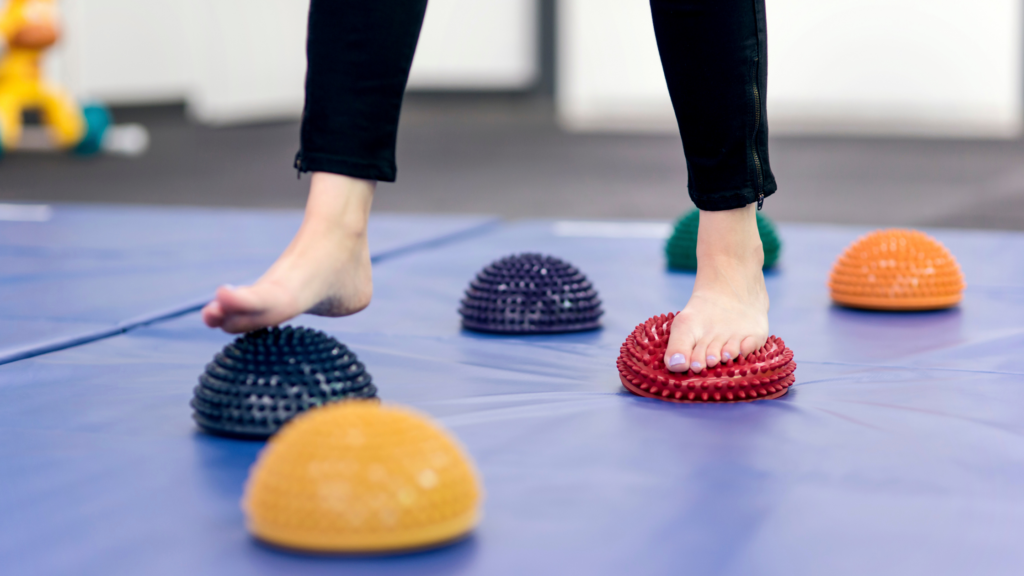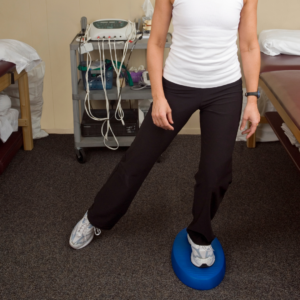Balance Disorders
Vestibular conditions such as vertigo, dizziness, and disorientation are side-effects that tend to affect patients who are suffering from balance-related disorders. Customarily, geriatric patients are more susceptible to experiencing complications related to maintaining balance. However, balance disorders can affect patients of all age groups, and these conditions are never to be taken lightly.
Symptoms
For most patients, dizziness and other conditions tend to crop up when standing for a prolonged period. Symptoms can also develop when you are lying or sitting down, with sensations that feel as though you’re spinning or floating. Vertigo is commonly referred to as an intense feeling of dizziness, that often seems as though it’s never-ending. Other potential symptoms of a balance disorder can include the following:
- Sensations of spinning or dizziness – which can be due to vertigo.
- Inability to keep your balance when walking. Constantly staggering your feet.

- Falling sensations when moving.
- Inexplicable lightheadedness, or feeling as though you’re about to faint.
- A spontaneous blurring of your vision.
More severe symptoms can include nausea or vomiting, perhaps even increased anxiety or panic. Despite the troublesome conditions of balance disorders, efforts can be made to maintain your ability to stay on your feet. Consider regular household changes, such as increasing the lighting in your home or wearing comfortable fitting shoes. Your physical therapist can even recommend the use of assistive devices or balance training methods that will put your mind at ease.
Causes
Unfortunately, many balance disorders tend to develop suddenly without any warning. Potential causes can include complications from a head injury or low blood pressure. Communicate with your physical therapist and accurately describe your symptoms to them. By doing so, they’ll be able to formulate a personalized treatment plan that is capable of tackling your specific condition. Advance Physical Therapy has professionals stationed in Astoria, Valley Stream, Wantagh, Lindenhurst, and Buffalo locations who are certified to help you lead a pain-free life. If you’re in the area and suffering from vestibular conditions, don’t delay making an appointment today!
What Is Vestibular Rehabilitation?
Vestibular rehabilitation therapy can effectively improve symptoms related to vestibular disorders. The vestibular system is part of the inner ear which aids in controlling spatial awareness and balance. People who have vestibular disorders can experience problems with imbalance, vertigo, and dizziness. These side-effects affect patients who are dealing with balance-related disorders. The symptoms you experience because of vestibular conditions can negatively impact your daily life. If you are looking for Balance Therapy in Buffalo, Advance Physical Therapy can help!
What Is Balance Therapy in Buffalo?
Vestibular conditions are problems that tend to affect people with balance disorders more often. Some symptoms of a balance disorder can include:

- Dizziness
- Trouble balancing when walking
- Falling sensations
- Blurring of vision
- Lightheadedness
Vestibular rehabilitation is a form of therapy that is meant to alleviate problems caused by vestibular conditions. This program is designed to reduce dizziness, vertigo, and imbalance through exercises. Your body is not able to completely restore the vestibular organs, but you can start to feel better and improve your vestibular function through compensation. Balance Therapy in Buffalo customizes their exercises to target each individual’s problems. The three methods of exercise that can be used are:
- Habituation – these exercises treat dizziness that is caused by motion. If you experience dizziness when you make quick head movements or feel dizziness in visually stimulating environments or when watching something on T.V., this exercise might be suitable for you.
- Gaze Stabilization – these exercises improve eye movements for those that experience blurred vision. One type of exercise involves the patient fixating their eyes on an object while moving their heads side to side or up and down. Another type of gaze stability uses vision and body sense as substitutes for the vestibular system. These exercises can also be helpful with little to no vestibular function.
- Balance Training – these exercises address balance problems and are used to improve steadiness. Balance training should be designed around an individual patient.
Your vestibular rehabilitation therapist will curate a plan that best fits your needs and improve your quality of life.
Contact Us
Balance Therapy in Buffalo may be right for you to improve your vestibular function. Our team at Advance Physical Therapy strives to provide you with custom, high-quality care to help you get back on your feet! Contact us today.
Balance Disorder Exercises
Have you or a loved one recently been faced with vestibular issues such as vertigo, dizziness, or general disorientation? At any age, balance issues such as these can have a deteriorating effect on your quality of life. At Advance Physical Therapy, our team can help treat these balance related issues. Our balance therapy in Buffalo will help patients dealing with balance disorders. We will provide a variety of exercises that can better their condition and treat their symptoms. For more information about these exercises, please get in touch with our staff by visiting our appointment page. Please see below for some recommended balance disorder exercise that can easily be performed from home:
Tightrope Walks
- Lie a piece of string on the floor in a straight line.
- Without drifting off to one side, walk across the line.
- To help keep your balance and stay in a straight line, hold your arms out wide.
- Walk at least 15 steps every time you perform this exercise.
Flamingo Stands
- Start in a standing position.
- Balancing on one leg, slowly lift the opposite foot off the ground.
 Once you’re completely balanced on one leg (use a chair or the wall for support if needed), lift the opposite knee to your chest.
Once you’re completely balanced on one leg (use a chair or the wall for support if needed), lift the opposite knee to your chest.- Hold this pose for 15 seconds before returning to the starting position.
- Perform at least three sets of this exercise on each side.
Bean Bag Balance
- Place a bean bag or item with a similar consistency on either your head or shoulder.
- Begin to walk in a straight line, focusing on your posture and balance to keep the bean bag in place.
- Once you’ve mastered walking in a straight line, try moving backward, side to side, or in a zigzag motion.
Single-Leg Cross Body Punches
- While balancing your weight on one foot, come to a quarter squat position.
- Make a fist with both hands, and begin to punch across your body.
- Once you have thrown 20 punches, repeat the exercise while balancing on the other leg.
- Perform three sets on each leg.
- For added difficulty, hold a pair of dumbbells in your hands while performing this exercise.
Advance Physical Therapy | Balance Therapy in Buffalo
At Advance Physical Therapy, we do not want patients to have to live with the stresses that are caused by balance disorders. If you or a loved one has been dealing with these complications, your condition can be vastly improved by performing certain exercises. For more information or to make an appointment, be sure to contact our team today! Our state-of-the-art balance treatment centers located in Astoria, Buffalo, Lindenhurst, Valley Stream, & Wantagh are ready to serve you!
Returning To Your Normal Exercise Routine, Gradually
This year, many daily routines were thrown out the window thanks in part to the COVID-19 pandemic. While the end to the pandemic still likely not coming until far in the future, areas are starting to open back up, signally a somewhat return to normalcy. What better time is there to get back into your exercise routine? At Advance Physical Therapy, we’d like to help you ease back into exercising without suffering from pain or injury.
Remember To Pace Yourself
Whether you have taken weeks or months off from exercising, it’s important to remember that your body will not be at the level it was at the initial time of your break from routine. While you may want to jump back into performing exercises at your previous levels of ability and intensity, doing so will cause more harm than good. Pushing yourself too hard too fast can help lead to injury, putting your fitness journey further back and setting you off schedule.
Stay Motivated
You may not have any issues staying motivated to work out once you decide to start getting back into your routine. However, it’s not uncommon for this motivation to wean, leaving you in a sedentary rut. To help avoid this, we recommend using the below motivational tips:
- Avoid making comparisons on social media to other people’s routines, everyone is different!
- Set realistically achievable goals for every week, month.
- Plan rewards for working out a certain amount of days each week.
- Switch up your routines often.
- Don’t base all your workout victories on a number on your scale.
Don’t Forget To Hydrate!
If you stopped your exercise routine completely once stay at home orders began, one thing you’ll notice is that it’s a lot warmer out now than it was back then. This fact means that you’ll need to put an extra emphasis on staying hydrated while you start your new routine. Increasing your water intake during the summer months will help keep your joints lubricated and pain-free. This will go a long way in allowing you to return to normal workout levels.
Contact Us For Balance Therapy in Buffalo
Staying active will play an important role in maintaining your physical and mental health. However, even after gradually returning to your exercise routine, an injury may still take place. Fortunately, our team at Advance Physical Therapy will be able to help if this happens. For more information regarding our services, make sure you contact our team today.

